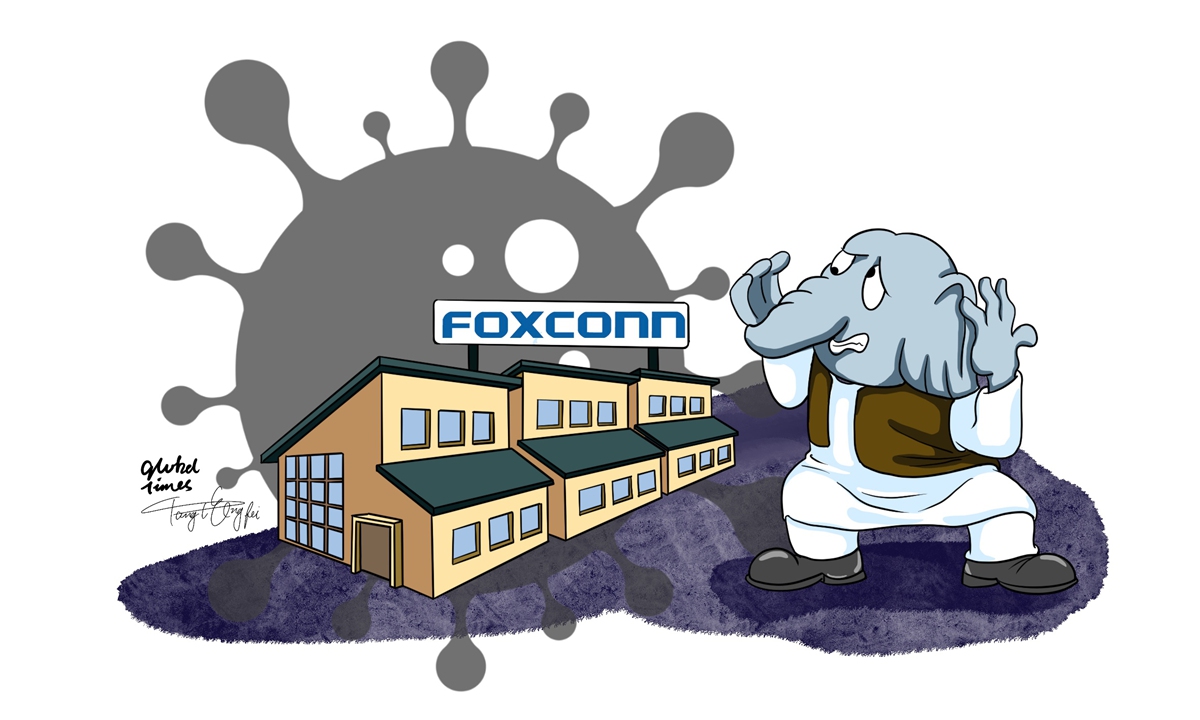Foxconn’s Strategic Pivot, From China To India And Beyond, Capitalizing On The Downturn Instead Of Retreating
Global electronics manufacturing is undergoing a profound transformation, and one company at the forefront of this change is Foxconn Technology Group. In a departure from its traditional stronghold in China, Foxconn is embracing a strategic shift towards diversification, expansion, and a more distributed manufacturing approach. This move comes as the industry experiences unforeseen challenges and shifts in demand dynamics. Despite a downturn in the market, Foxconn is not merely weathering the storm; instead, it's leveraging the situation to accelerate its global migration.

Foxconn Technology Group is embracing a shift away from China and towards India and other locations, capitalizing on the downturn instead of retreating.
However, this time unlike earlier, when it was confident in a demand rebound for gadgets, the company, which produces smartphones, computers, and AI servers, is now acknowledging a more challenging outlook for the year. However, rather than adopting a defensive stance, Foxconn is choosing to invest further to expedite its global expansion strategy.

Once known for employing a million workers in a single Chinese city for iPhone assembly, Foxconn, along with its main clients like Apple and Taiwan Semiconductor Manufacturing Co., clung to this concentrated operational model for its efficiency.
However, Foxconn’s approach is shifting with China losing its labour, logistics, and reliability edge and the risks of over-dependency on a single location becoming evident.
Despite the current economic uncertainties and difficulties in establishing overseas operations, recent announcements emphasize the company’s commitment to expansion.
China No Longer A Green Pasture For Foxconn
The dynamics have shifted, and the days of concentrating most operations in one place (China) have passed, and Foxconn’s move away from the mega-factory model it once relied upon carries significant implications for industries, geopolitics, and global economies.
Foxconn’s era of producing a major product entirely in a single location is gone, and while the company owns and operates its facilities, Apple holds the authority to determine which products are manufactured and where.
Therefore, Apple’s seeming reluctance to move away from China might be tied to a reported deal that allows the company to maintain sales in China; the Cupertino-based company reportedly made a deal with Beijing to continue procurement in return for the US company being allowed to keep selling products there.

India Emerges As A Greener Pasture
Similar agreements have also been established with New Delhi, enabling Apple to establish stores in India and allowing Taiwanese assemblers to expand production.
Foxconn’s presence in India has grown significantly, with multiple campuses housing numerous factories and its revenue from India is substantial, and the company’s chairman anticipates further significant investments in the country.
Yet, India won’t replace China as the electronics manufacturing hub, as other nations like Vietnam, Mexico, Brazil, Thailand, and the Czech Republic offer their own competitive advantages.
Therefore, rather than placing all bets on one location, Foxconn is diversifying its investments. Instead of a few massive facilities with hundreds of thousands of employees, the company is adopting a hub-and-spoke model with numerous locations, each operating with tens of thousands of staff.
Foxconn Continues To Invest
Recently, Foxconn reported a 30% decline in second-quarter operating income due to a 14% drop in revenue, signaling a significant downturn. The focus is shifting from consumer electronics and smartphones to computing, cloud, and networking products. Consequently, Foxconn is bracing for a decline in full-year revenue.
This economic vulnerability might paradoxically present an ideal opportunity for Foxconn to accelerate its migration efforts. With machinery available during idle periods and a chance for factory bosses to set up new lines, this downturn could facilitate the migration strategy.

In the past months, Foxconn has announced investments exceeding $1.1 billion in India, Vietnam, and Thailand. This includes land purchases in India and Vietnam, machinery acquisitions from Apple, and investments in joint ventures and development hubs.
These investments show Foxconn’s commitment to growth and the acknowledgement that replacing its massive Chinese factories with a single location is not feasible. The company’s slow pace of migration outside China, especially its cautious approach in India, reflects the immense challenge of replicating the success it enjoyed in China over decades.
As China’s grip on the global supply chain loosens and demand worldwide recedes, Foxconn is poised to rewrite its business model; the shift in its business model signifies a significant step forward, even amidst the complexity of diversifying operations across a multitude of nations.
The Last Bit, As the world steers a rapidly changing global supply chain and economic landscape, Foxconn’s bold pivot shows it can change its business strategy to retain resilience, adaptability, and foresight.
The company’s decision to invest in multiple locations, embrace diversification, and move beyond its traditional mega-factory strategy reflects a nuanced understanding of the complexities and opportunities in the global electronics manufacturing industry.
Foxconn’s commitment to rewriting its business model amid economic uncertainties sets a precedent for other industry players to consider similar strategies.
The journey ahead is undoubtedly challenging, but Foxconn’s proactive approach positions it to emerge stronger, more agile, and better poised to navigate the ever-evolving demands of the modern world.




